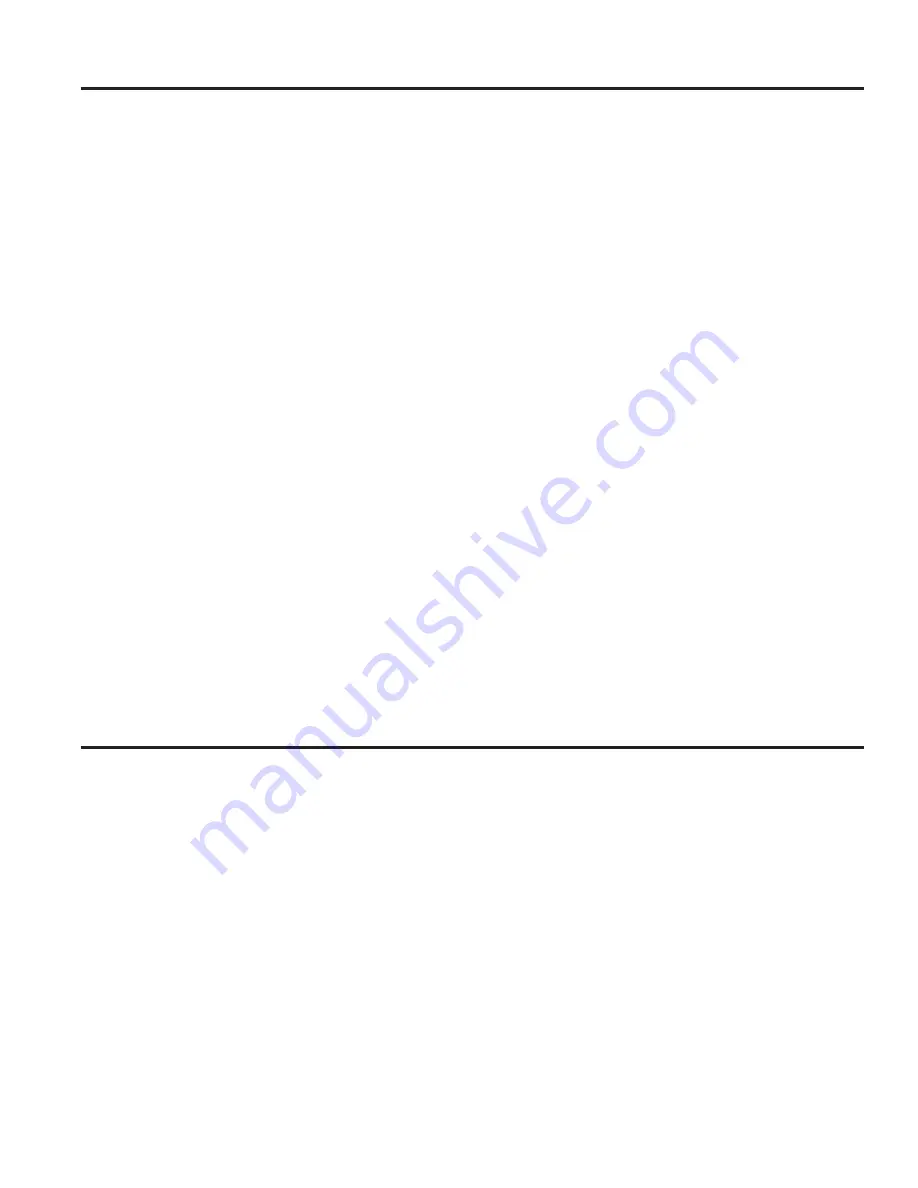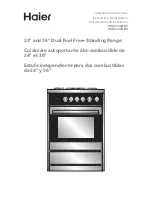
18
Oven Probe (Cont.)
U
SI
N
G
T
H
E
R
A
N
G
E:
O
ve
n
Pr
ob
e
/ O
ve
n
C
oo
ki
ng
G
ui
de
Probe Usage
The temperature probe can only be used with Bake,
Convection Bake, and Convection Roast.
To use the probe with preheating:
1. Select the desired cook mode (
Bake
,
Convection
Bake
, or
Convection Roast
) pad and enter the
desired cooking temperature with the number pads.
2. Insert the probe into the food (see Proper Probe
Placement).
3. Once the oven is preheated, place the food in the
oven and connect the probe to the probe outlet,
making sure it is fully inserted. Use caution, the oven
walls and probe outlet are hot.
4. When the probe is connected, the display will prompt
you to enter the desired food temperature. The
maximum internal food temperature that you can set
is 200° F.
To use the probe without preheating:
1. Insert the probe into the food (see Proper Probe
Placement).
2. Place the food in the oven and connect the probe into
the probe outlet in the oven.
3. Press the
Cook Mode
pad (
Traditional Bake
,
Convection Bake
, or
Convection Roast
) and enter
the desired cooking temperature with the number
pads. Select
Probe
pad, then follow the display
prompts to enter the desired food temperature.
Probe Care Guidelines
■ Use of probes other than the one provided with this
product may result in damage to the probe outlet.
■ Use the handles of the probe and plug when inserting
and removing them from the meat and outlet
■ To avoid damaging your probe, do not use tongs to
pull on the cable when removing it.
■ To avoid breaking the probe, make sure food is
completely defrosted before inserting the probe.
■ To prevent possible burns, do not unplug the probe
from the outlet until the oven has cooled.
■ Never leave the probe inside the oven during a self or
steam clean cycle.
■ Do not store the probe in the oven.
Oven Cooking Guide
Cook food thoroughly to help protect against food borne illness. Minimum safe food temperature recommendations
for food safety can be found at
IsItDoneYet.gov
. Use a food thermometer to measure food temperatures.
Oven Cookware Guidelines
The material, finish, and size of cookware affect baking
performance.
Dark, coated and dull pans absorb heat more readily
than light, shiny pans. Pans that absorb heat more
readily can result in a browner, crisper, and thicker crust.
If using dark and coated cookware check food earlier
than minimum cook time. If undesirable results are
obtained with this type of cookware consider reducing
oven temperature by 25°F next time.
Shiny pans can produce more evenly cooked baked
goods such as cakes and cookies.
Glass and ceramic pans heat slowly but retain heat well.
These types of pans work well for dishes such as pies
and custards.
Air insulated pans heat slowly and can reduce bottom
browning.
Keep cookware clean to promote even heating.
Stoneware heats slowly and retains heat well. It is
recommended to preheat this type of cookware if
possible. Additional cook time may be required.
Cookware used in broil modes and air fry must be broil-
safe.
295D1703P026 Rev. 0















































